
Impatiens, Sunpatiens: planting, sowing, caring for
Contents
Impatiens in a nutshell
- It is one of the few annuals able to flower in full shade!
- It offers charming flowering in bright or soft colours for up to six months of the year!
- Frost-tender, it will flower indoors or in a conservatory all year round, or outdoors in open ground from June until first frosts.
- Very floriferous, with rapid growth, it thrives equally in open ground and in pots.
- Star of planters and pots, it is also indispensable at front of a border, in a shaded flowerbed or to brighten woodland shade.
A word from our expert
No, l’Impatiens is not an old-fashioned flower! Unfairly overlooked and dismissed as passé, this annual flower of undeniable cheer nevertheless deserves a prime place in every garden! Impatiens, also called busy Lizzie or garden balsam, is among the rare annual plants that thrive in partial or full shade, brightening beds with its often brightly coloured flowers.
Apart from SunPatiens®, those new hybrids that tolerate sun and disease better, widening range of uses and colours!
From Impatiens walleriana to New Guinea Impatiens hawkeri, it’s the best summer bedding plant: it blooms relentlessly from June until first frosts and suits beds, pots, or borders and window boxes, bringing vibrancy, charm and elegance.
Busy Lizzie is tender and can be grown as an annual or as a perennial indoor plant kept warm in house or conservatory, where it will produce flowers even in the heart of winter.
How to prune an impatiens, how to take a cutting from New Guinea impatiens — discover all our tips for planting or sowing this easy, low-maintenance plant!
Be tempted by our Impatiens and SunPatiens, these must-have flowers for bringing brightness and colour to all your summer displays!
And indulge in our collection of annual flowers, as green young plants (plug plants) or as seeds!
Description and botany
Botanical data
- Latin name Impatiens
- Family Balsaminaceae
- Common name Impatiens, Busy Lizzie, Balsam
- Flowering June to autumn
- Height 0.15 to 2 m
- Exposure shade, partial shade
- Soil type fresh, well-drained
- Hardiness frost-tender
Impatiens, also called Busy Lizzie or Balsam is a perennial herbaceous plant belonging to family Balsaminaceae, native to swampy forests or moist, shaded places in tropical and warm temperate regions.
Frost-tender, it is grown as an annual in the garden in our latitudes or as an indoor plant because this non-hardy perennial cannot withstand our winters and dies at first frosts.
Genus comprises more than 900 species. Oldest species cultivated in gardens is Impatiens balsamina, the garden balsam, which has given rise to numerous cultivars, notably double-flowered camellia types. Also common are Impatiens walleriana and its hybrids and Impatiens niamniamensis, the peculiar “parrot’s beak” from Congo, which bears spur-equipped flowers and also occurs in several varieties.
Hybridization work has notably produced SunPatiens® (Impatiens x hawkeri), hybrids derived in part from Impatiens hawkeri of New Guinea, now indispensable because more tolerant of sun, such as the ‘Compact’ series.
With rapid growth, Impatiens forms within months a bushy clump about 25 to 80 cm high on average with almost the same spread. While rare species such as I. glandulifera or Himalayan balsam climb to 2 m and others are creeping like Impatiens repens, most new hybrids available offer a pretty compact, ball-like habit, often very ramified.
Hybrids of I. walleriana have a more covering habit. If most impatiens cannot be grown outdoors in open ground due to their tenderness, Impatiens arguta has a more vigorous stump with tuberous roots that withstand temperatures of -12 to -15°C.
Stems are easily broken, almost fleshy, thick and stiff, sometimes tinged red, carrying many leaves alternate, opposite or whorled from 2 to 20 cm long, borne on a long petiole. Generally narrow, ovate or elliptical with a pointed tip, with lamina crenate and slightly dentate, they range from pale green to dark green. Some varieties, notably New Guinea types, display very decorative foliage tinged bronze, yellow or variegated.

Some flowers: Impatiens Compact Hot Lilac, Impatiens puberula, Impatiens Compact Orchid Blush, Impatiens Compact White, Impatiens niamniamensis
This lush foliage, fleshy and glossy, sometimes slightly translucent, is indeed covered with numerous flowers from June until first frosts in garden or all year round indoors protected from frost. From late spring, long-pedicelled flowers appear solitary in the axils of leaves or grouped in small clusters of 2 to 6, renewing until autumn.
They measure 2 to 6 cm across and are made of five heart-shaped petals. Semi-double or double, resembling the plump shape of tiny camellias, single and flat, sometimes helmet-shaped or equipped with a curved spur as in the very singular Impatiens niamniamensis with hooked flowers evoking parrot beaks, flower shape varies with varieties and hybrids.
Unicolour or bicolour, they offer endless bright, sparkling colour ranges, perfectly set off by dense foliage.
Shades run from pastel to almost gaudy, from pure white, purple, lavender blue through every shade of pink and red, scarlet, crimson to yellow or coral. With a silky, velvety texture, petals of some impatiens are subtly marbled or marginate or display a maculate throat in a contrasting tone.
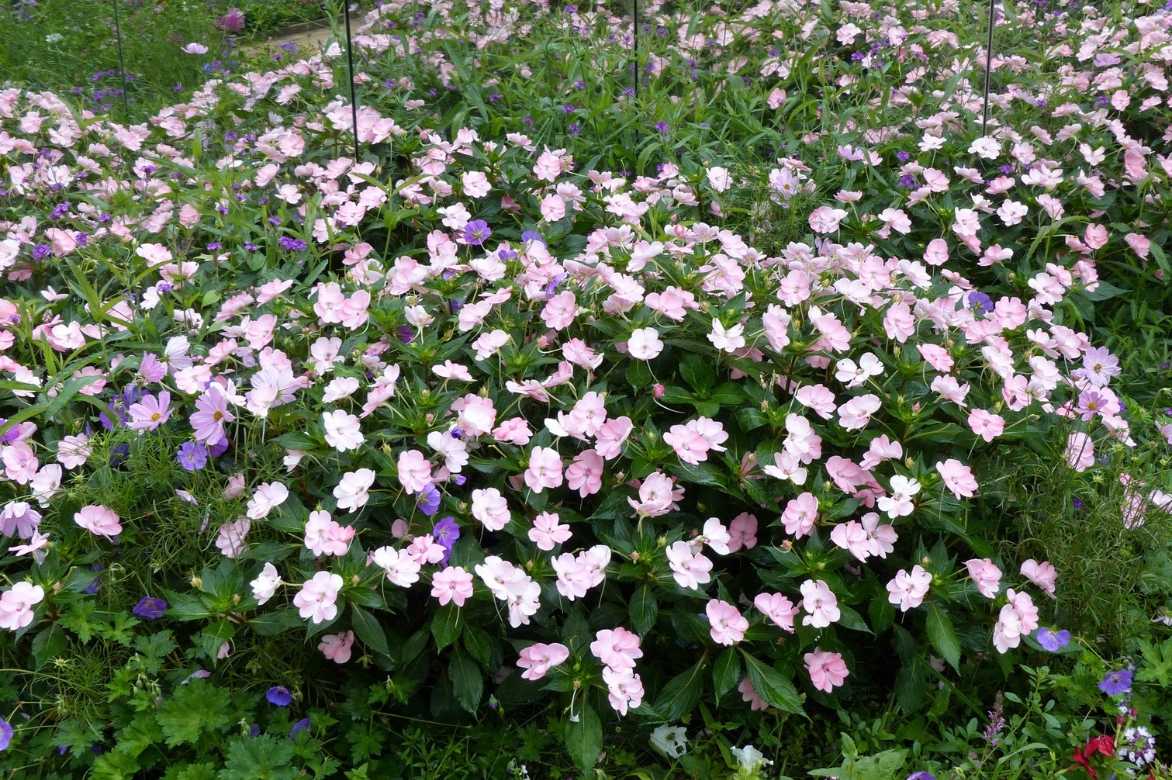
This extremely generous flowering, sometimes slightly scented, gives way in autumn to explosive dehiscent fruits that suddenly burst, violently ejecting their seeds when ripe; it is this impatience to fling seeds far and wide that gave the plant its name impatiens!
This tender perennial cannot withstand negative temperatures, which is why, in our climates, it is cultivated as an annual in open ground or in pots. While impatiens long preferred semi-shaded or shaded situations, new hybrids such as SunPatiens® now tolerate full sun very well and adapt equally to cool climates and to our warmest regions.
In fresh, rich soil, Impatiens offers unmatched floribundity and is almost care-free!
With their fresh or jaunty colours, these summer flowers are ideal for shaded garden scenes, enlivening summer displays in beds, in borders along a path or wall, at woodland edges, in window boxes on a windowsill or in containers on a terrace or near entrances.
Impatiens are believed to have air-purifying and cleansing properties for ambient air.
Main species and varieties
Genus comprises more than 900 species, some such as Impatiens balsamina or garden balsam, Impatiens walleriana (rarely exceeding 40 cm in height) and Impatiens hawkeri have produced numerous varieties and hybrids, continually increasing and enriching an already wide range of forms and colours.
Following extensive hybridization, Impatiens Sunpatiens, or New Guinea impatiens, was developed — more resistant to disease and more tolerant of sun than classic Impatiens, and is now indispensable.
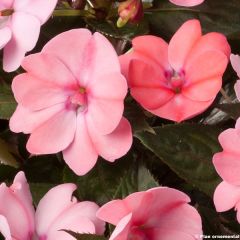
Impatiens Sunpatiens Compact Blush Pink - Busy Lizzie
- Flowering time July to November
- Height at maturity 25 cm

Impatiens SunPatiens Compact Purple
- Flowering time July to October
- Height at maturity 60 cm
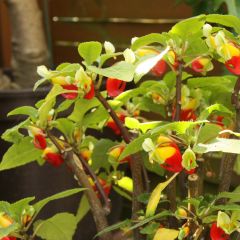
Impatiens niamniamensis
- Flowering time July to December
- Height at maturity 60 cm
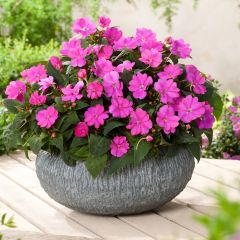
Impatiens Sunpatiens Compact Hot Lilac - Busy Lizzie
- Flowering time July to November
- Height at maturity 40 cm
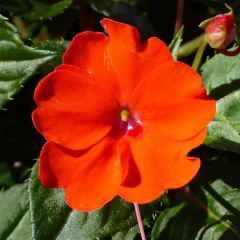
Impatiens Sunpatiens Compact Electric Orange
- Flowering time July to November
- Height at maturity 50 cm

Impatiens Sunpatiens Compact Orchid Blush - Busy Lizzie
- Flowering time July to November
- Height at maturity 50 cm
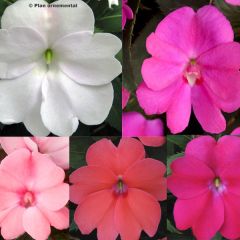
Selection of 5 Sunpatiens Impatiens
- Flowering time July to November
- Height at maturity 25 cm
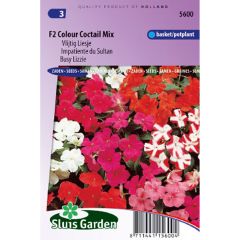
Impatiens walleriana F2 Colour Cocktail Mix - Busy Lizzie
- Flowering time July to November
- Height at maturity 20 cm
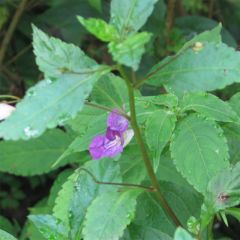
Impatiens puberula
- Flowering time August to November
- Height at maturity 15 cm
Discover other Impatiens and Sunpatiens
View all →Available in 2 sizes
Available in 0 sizes
Available in 1 sizes
Available in 2 sizes
Available in 2 sizes
Available in 3 sizes
Available in 2 sizes
Available in 1 sizes
Available in 2 sizes
Available in 1 sizes
Planting
Where to plant Impatiens?
Impatiens is a frost-tender perennial plant that does not withstand sub-zero temperatures and must be brought indoors for winter as it dies at 0 °C. For this reason it is grown in the garden as an annual in open ground, dying back at first frosts, or as a tender indoor perennial (keep warm over winter at a minimum of 10–15 °C) offering flowering throughout the year.
You can put pots outside in fine weather once temperatures rise above 15 °C and frosts are no longer expected.
Although recent hybrid selections tolerate sun better, Impatiens remains one of the sure bets among summer shade flowers, the only annual able to flower in full shade. Hybrids tolerate bright but non-scorching positions provided their roots stay cool during summer.
In pots outdoors, protect it from wind.
As a tropical plant, it likes humid conditions and will be particularly happy in a greenhouse or conservatory in filtered light without direct sun and sheltered from draughts.
It is easy to grow in fresh, humus-bearing and well-drained soil, as it tolerates neither drought nor stagnant moisture.
A classic summer shade flower to bloom throughout the season in cool, shady corners of the garden, Impatiens can be planted equally in pots or window boxes as in open ground, in groups at the edge of a bed of bushes, perennials or annuals, at the edge of a woodland, or to punctuate temporary path borders. Low cultivars (10–15 cm high) or new hybrids with a very compact habit make attractive groundcovers.
They also make good indoor plants for the conservatory and will keep for many years.

Impatiens are excellent groundcovers for shade!
When to plant Impatiens?
Planting our Impatiens plug plants takes place in spring from April to May, even into June depending on region, in any case after last frosts, in open ground or in pots. Planting under cover is possible from March.
How to plant Impatiens?
On receipt, pot on and keep our Impatiens plug plants under cover and let them gain strength for a few weeks before placing outdoors once frost risk has passed.
In open ground
Allow around 8 to 10 plants per m2, spaced at least 20 cm apart in all directions. You can plant large numbers to obtain big flowering drifts under trees, for example. Plant in staggered rows. Soil must be fertile and well-drained.
- Dig over soil to half a spade depth
- Dig a hole 2–3 times larger than size of the plug (about 15 cm deep)
- Lay a good bed of gravel for perfect drainage
- Mix excavated soil with geranium potting compost and coarse sand
- Place plug plant in centre of hole, collar at soil level
- Bring soil back to enclose the roots
- Firm down with foot
- Water thoroughly
In pots
Most Impatiens are the kings of summer window boxes and containers! Mix varieties. Space plug plants of Impatiens 20–25 cm apart for a dense, vibrant composition.
- Thoroughly soak plug plants before planting
- Line bottom of container with gravel or clay pebbles
- Plant in geranium potting compost mixed with river sand; fill gaps
- Firm down without damaging plug
- Water thoroughly, then regularly but without excess as soon as surface of compost dries
- Store pot in autumn in a frost-free place if you wish to grow as a perennial, and bring out in May, avoiding overly hot sun
More advice on our blog to succeed with planting plug plants in window boxes!
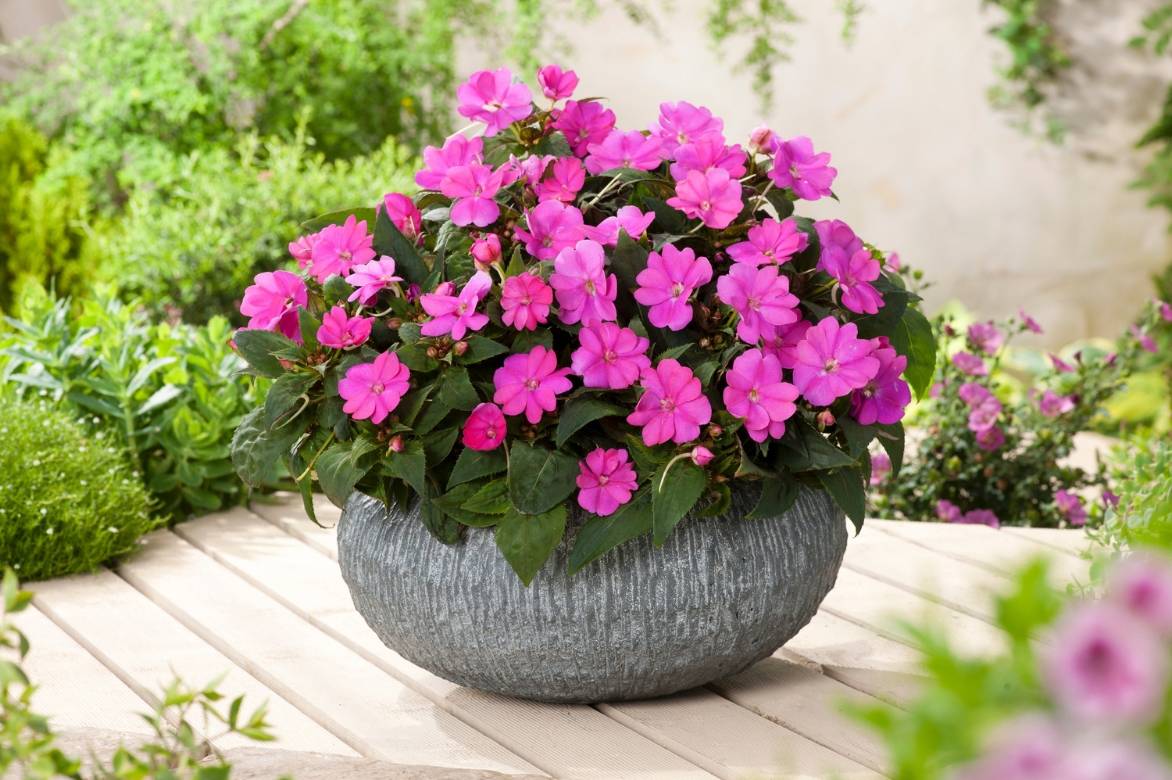
Impatiens Compact Lilac in a pot
Read also
Planting annualsWhen and how to sow impatiens seeds?
Under cover
Sow impatiens seeds from March under heated cover. Plants will flower after about 6 weeks.
- In a seed tray sow seeds on surface without covering, in a mix of potting compost and heather soil
- Place in light in a warm spot between 16 and 21°C
- Keep substrate moist but not waterlogged until germination, about 18 to 21 days
- Keep seedlings warm until mid-May
- Plant out in ground, spacing 0.30 m, or in pots or window boxes after any risk of frost has passed, adding compost to each planting hole
Direct sowing
- In May, in well-worked soil enriched with potting compost, sow your impatiens seeds thinly by broadcasting when any risk of frost has passed
- Cover lightly with potting compost without burying
- Firm down
- Water generously with a fine spray
- Thin out sowing, keeping only one young plant every 30 to 50 cm
- Pinch out growing tips to force young impatiens to ramify
→ Learn more in our tutorial : How to sow impatiens?
Maintenance, pruning and care
Impatiens is an annual floriferous plant, hassle-free and above all almost maintenance-free, provided it is regularly fed with fertiliser and well watered!
In the ground
Impatiens does not tolerate drought. Watering must be regular, especially if there is no rain and weather is dry, without being excessive — once or twice a week — because its roots are sensitive to excess moisture, which causes root rot.
Remove faded flowers and dead stems regularly to keep plants looking their best and to boost flowering.
Very frost‑tender, the plant dies at first frost and must be renewed each year in the garden: lift clumps unless you wish to keep them. In that case, cut the plant back to soil level, pot up and store in a frost‑free warm place out of direct sunlight: indoors, flowering is almost continuous if the pot is kept above 15°C.
Caring for impatiens in pots
With rapid growth it is greedy: water once a week, letting the soil dry between waterings to avoid any risk of rot, and do not let water stand in saucers.
Indoors, maintain high humidity because foliage and flowers wilt quickly if air is too dry: place pots on a tray of clay pebbles to increase ambient humidity, which this tropical plant needs indoors.
Apply a liquid feed once or twice a month during growth. Water sparingly in winter without letting the rootball dry out and keep room temperature at 10–15°C.
Pruning is not necessary; Impatiens naturally keeps a compact, rounded habit: in spring, simply cut back stems that tend to become bare at the base to encourage new shoots and renew flowering.
Repot if necessary every 2 years in spring and give plants an outing to the garden in a shaded position from May to September. You can also transplant them for the season into the ground within a shaded flowerbed or border.
Potential diseases and pests
Resistant to disease, l’impatiens are largely trouble-free. Outdoors, remember to protect them from slugs that favour their young foliage and read our tips to keep gastropods away!
Avoid overwatering, which can cause grey mould (Botrytis) of the collar, main stem and flower buds: always allow soil to dry out between waterings. If affected: repot into a well-draining, non-waterlogged mix and water sparingly.
Impatiens grown in greenhouse or conservatory are sensitive to red spider mites that thrive in warm, dry conditions and cause yellowing followed by leaf drop: spray soft water regularly on foliage to maintain a humid environment around the pot to prevent infestations. If infestation occurs: carry out soap-water sprays.
Indoors, they may also be attacked by aphids and whiteflies during summer: prune back affected stems significantly and spray with soapy, non-calcareous water.
Multiplication
Spontaneous sowing is common: impatiens seeds readily reseed when conditions are favourable. If multiplication of impatiens can be done by sowing (with seeds harvested in autumn), propagation by cuttings using herbaceous cuttings in May–June remains a quick and easy way to obtain new plants.
How to take cuttings of Impatiens?
- Take stem cuttings 7 to 10 cm long
- Place them in a glass of water indoors
- After two to three weeks, when roots have appeared, replant the cuttings into buckets filled with moist turf and coarse sand
- Keep warm and frost-free during winter (minimum 15°C) and transplant following spring into open ground or into pots after last frosts
Pairing Impatiens
With their bright or pastel colours, Impatiens are among annual plants essential in summer in shaded garden scenes, bringing cheer and charm.
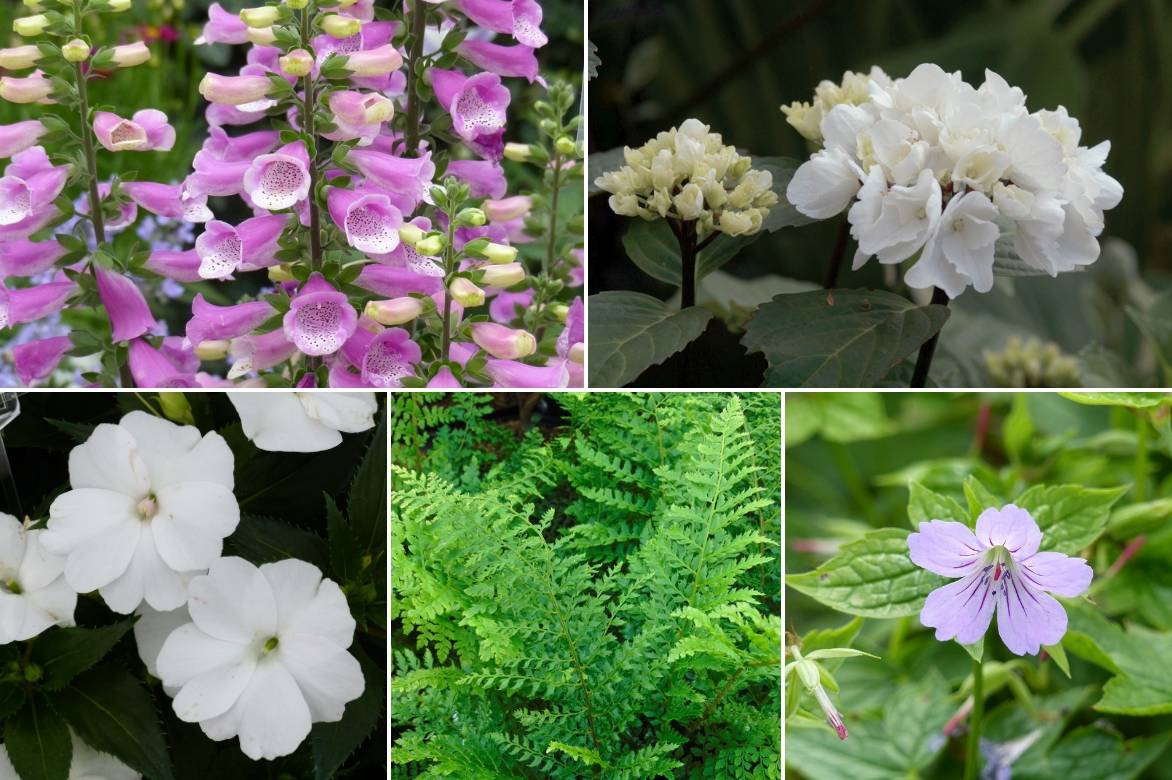
An idea for a pairing in a shaded setting: Digitalis purpurea, Hydrangea macrophylla ‘Black Steel Zebra’, Impatiens Compact White, Polystichum setiferum ‘Proliferum’, Geranium nodosum
They fit easily into city gardens, natural or naturalistic or romantic gardens, to create luminous, fresh and often very colourful compositions. With them, shade is not always a sign of dull or pale colours!
In groups, they are easy to combine with other summer-flowering perennials for shade or part-shade or with annuals, quickly forming beautiful, colourful and imposing masses alongside Astrantias, Japanese anemones, Fuchsias and Ammi.
Impatiens rival in beauty with plants with bronze, silvery and yellow-green foliage, harmonising with Antirrhinums, Diascias, Helichrysum petiolare, tobacco plants and verbenas with a spreading habit.
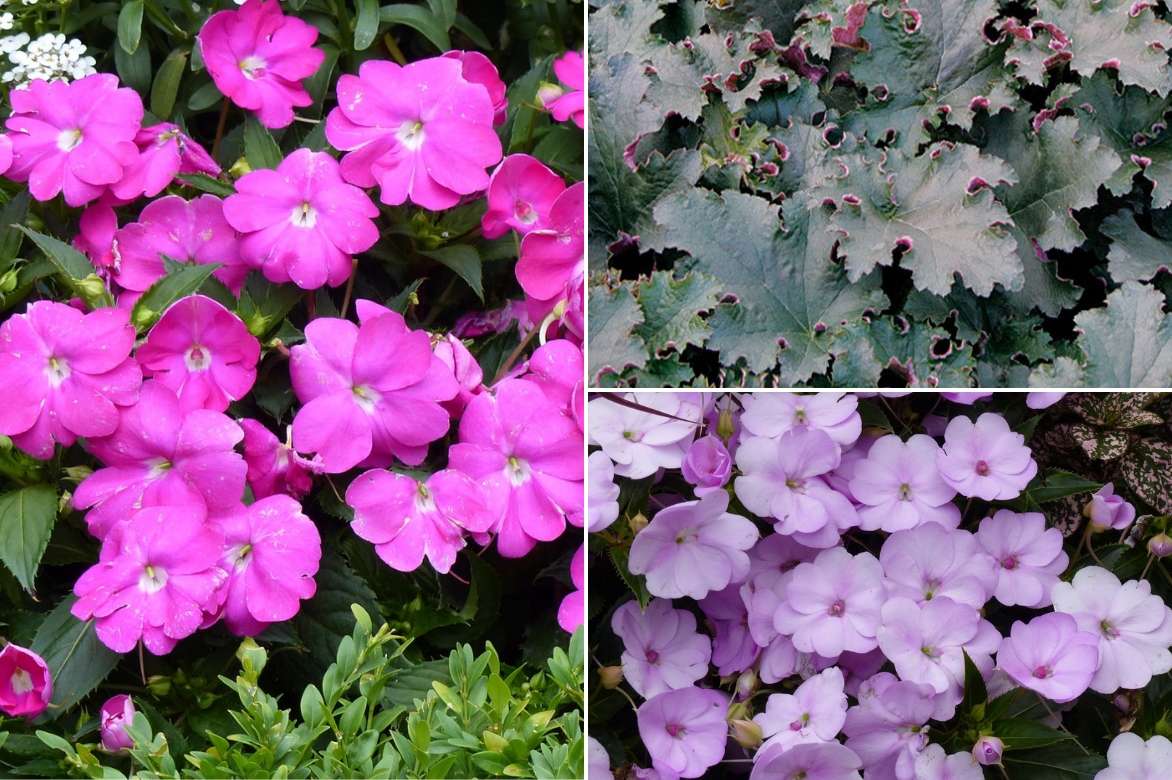
A planting idea for a trough: Impatiens Compact Hot Lilac, Heuchera ‘Purple Petticoats’ and Impatiens Compact Orchid Blush
Plant them at the front of a border with small grasses such as fescues.
In an understorey setting, dot a tapetum of Heucheras and Hostas with a few Impatiens plants and mix them with bulbs for naturalising in shade!
Paired with Hydrangeas and pelargoniums, they will hide bare base of shrub roses throughout the season in a fresh, romantic scene of a pink garden or white garden.
In pots on a shaded terrace, mix with other annual plants such as coleus, begonias or morning glories.
Useful resources
- Discover our tips to grow Impatiens in a pot
- Find our most beautiful annual flowers!
- What to plant in shade under my trees? This is a frequent question for gardeners: we have the answers!
- Find all our tips to succeed with your flower sowings on our blog!
- Discover our best ideas to bring flowers to your balconies and terraces
- Annual plants occupy the space they are given within weeks: discover our solutions!
- Subscribe!
- Contents
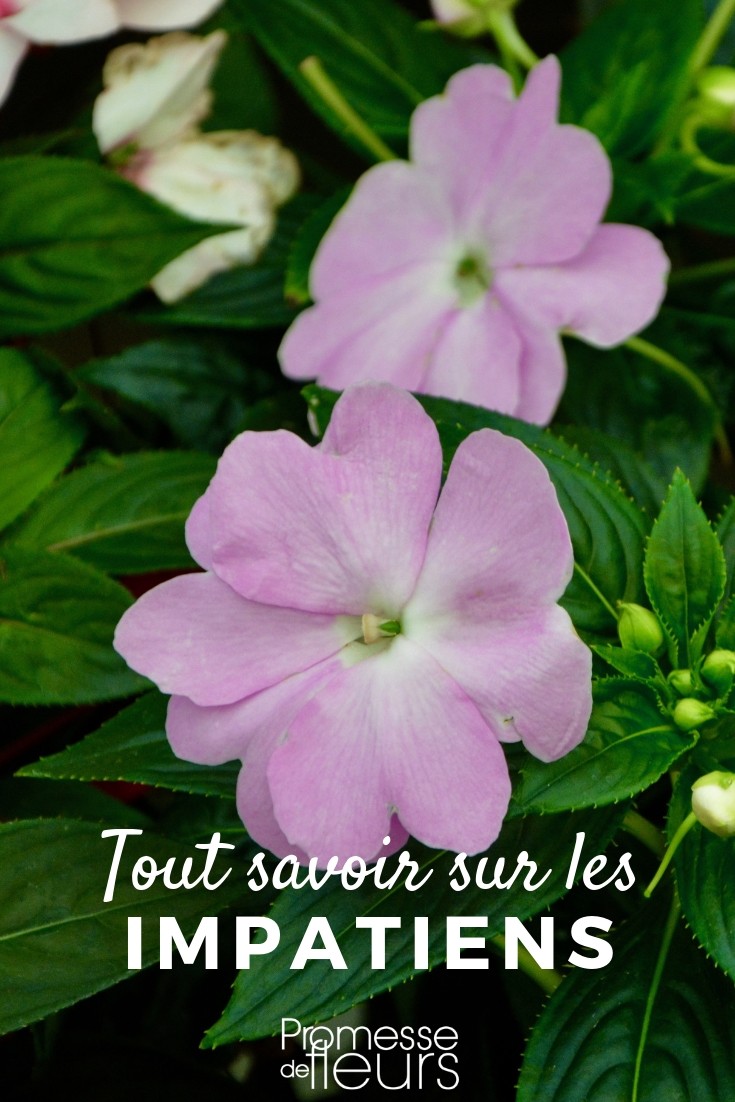































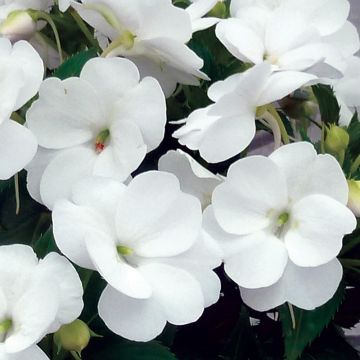


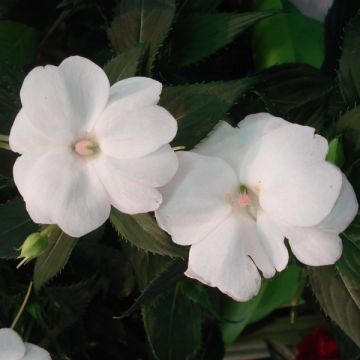
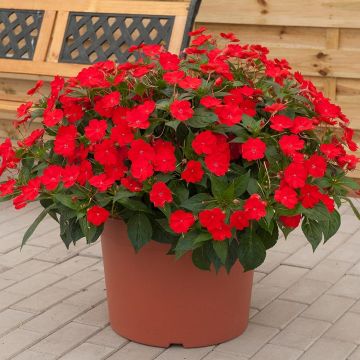
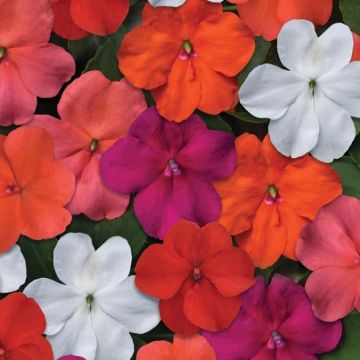
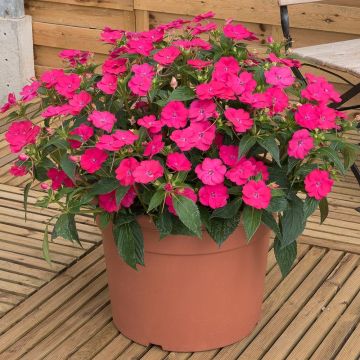
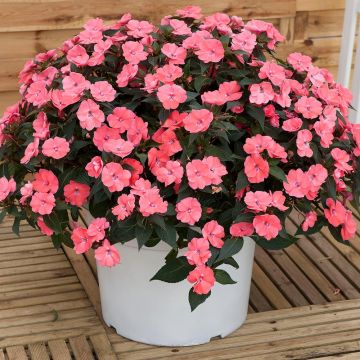
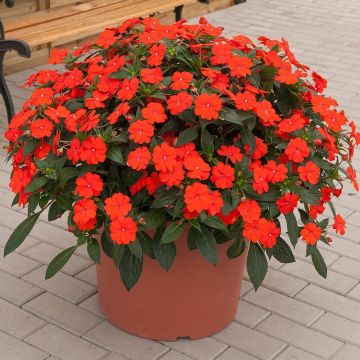
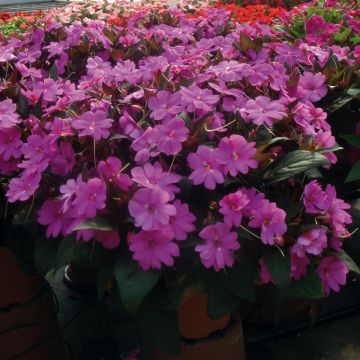
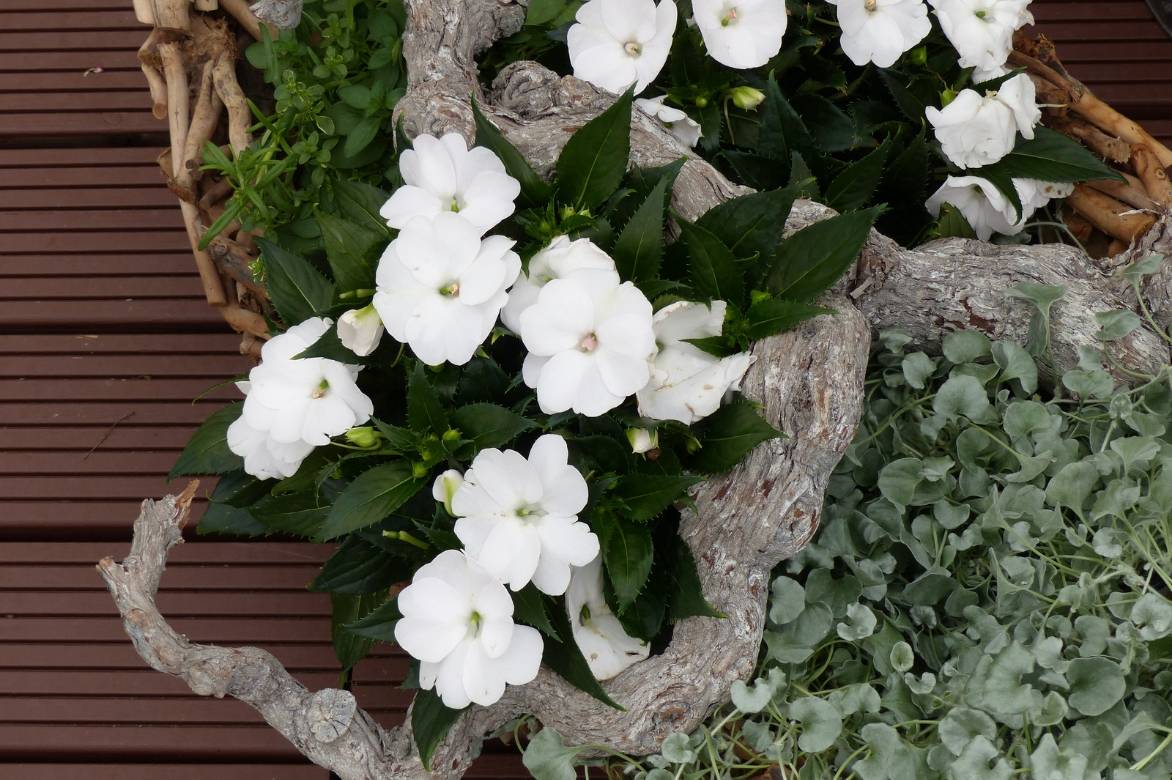
Comments